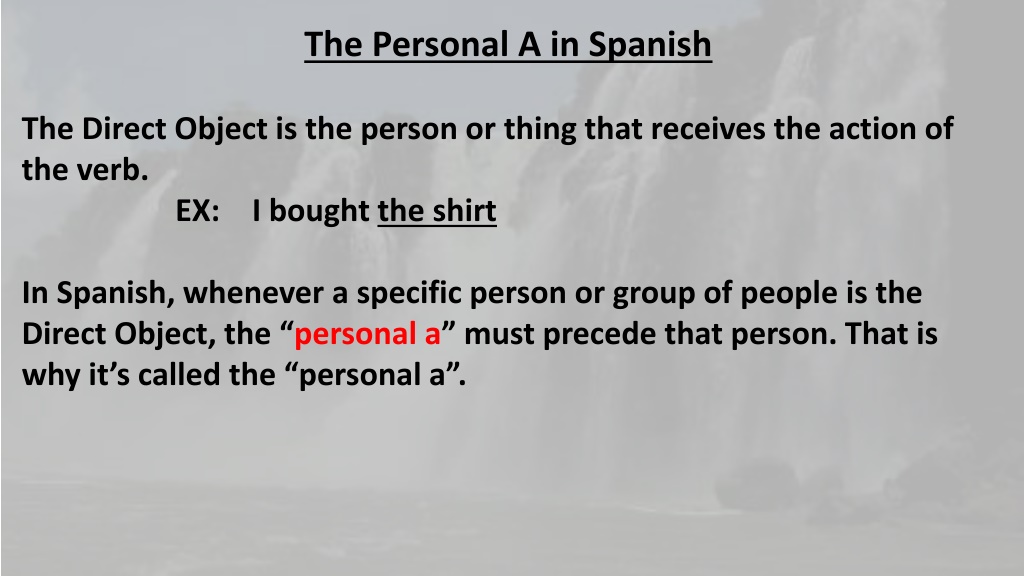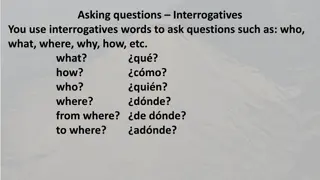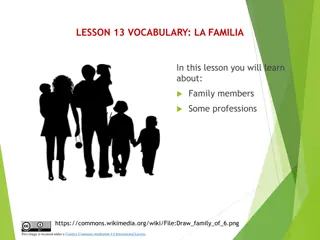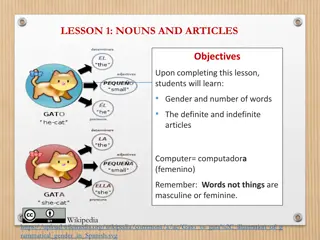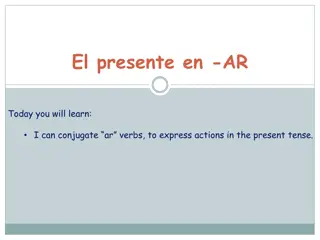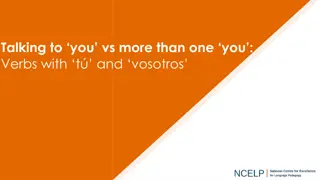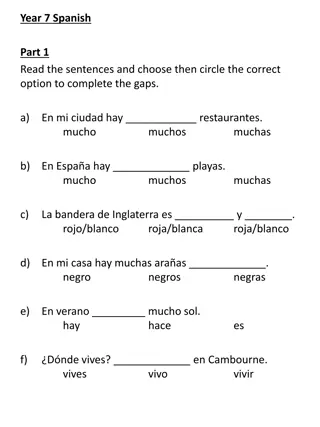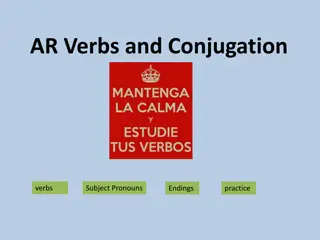Understanding the Personal "A" in Spanish Grammar
The direct object in Spanish receives the action of the verb, with the "personal a" used when referring to specific people. Learn when to use "a la, al, a las, a los" based on gender and number. This rule extends to pets but doesn't apply after the verb "TENER."
Download Presentation

Please find below an Image/Link to download the presentation.
The content on the website is provided AS IS for your information and personal use only. It may not be sold, licensed, or shared on other websites without obtaining consent from the author. Download presentation by click this link. If you encounter any issues during the download, it is possible that the publisher has removed the file from their server.
E N D
Presentation Transcript
The Personal A in Spanish The Direct Object is the person or thing that receives the action of the verb. EX: I bought the shirt In Spanish, whenever a specific person or group of people is the Direct Object, the personal a must precede that person. That is why it s called the personal a .
Sometimes we need to say the word the after the personal a. Example: I see the woman = Yo veo a la mujer. There are 4 ways to do this - use: 1. a la if the person is feminine singular. 2. al if the person is masculine singular (we cannot use a el) 3. a las if the person is feminine plural. 4. a los if the person is masculine plural.
Sometimes people use the personal a with a pet: Yo buqu al mi perro. (I looked for my dog)
You do not use the personal a after the verb TENER, even if the direct object is a person. Tengo quince promos. (I have fifteen cousins)
